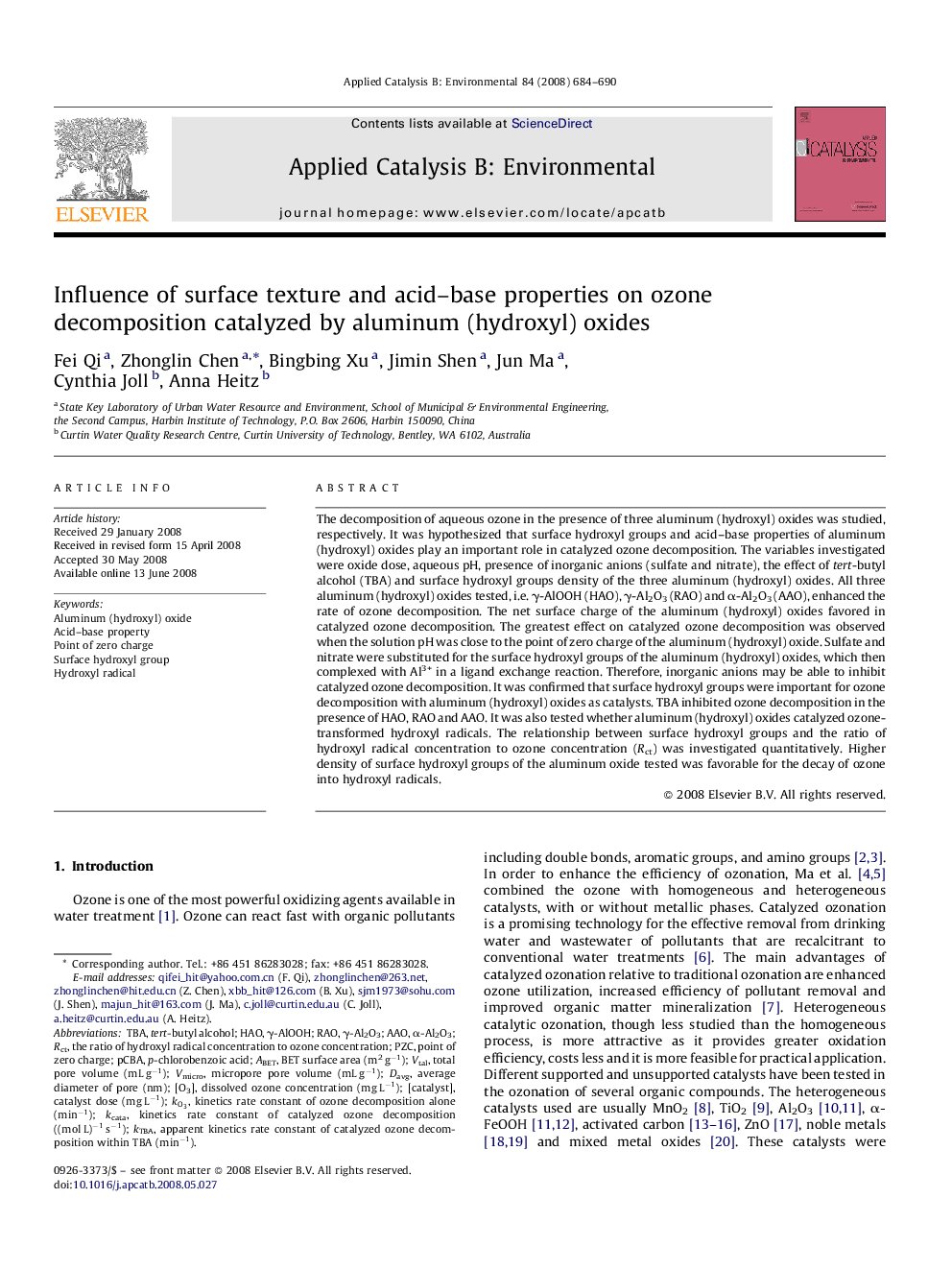| کد مقاله | کد نشریه | سال انتشار | مقاله انگلیسی | نسخه تمام متن |
|---|---|---|---|---|
| 48207 | 46496 | 2008 | 7 صفحه PDF | دانلود رایگان |

The decomposition of aqueous ozone in the presence of three aluminum (hydroxyl) oxides was studied, respectively. It was hypothesized that surface hydroxyl groups and acid–base properties of aluminum (hydroxyl) oxides play an important role in catalyzed ozone decomposition. The variables investigated were oxide dose, aqueous pH, presence of inorganic anions (sulfate and nitrate), the effect of tert-butyl alcohol (TBA) and surface hydroxyl groups density of the three aluminum (hydroxyl) oxides. All three aluminum (hydroxyl) oxides tested, i.e. γ-AlOOH (HAO), γ-Al2O3 (RAO) and α-Al2O3 (AAO), enhanced the rate of ozone decomposition. The net surface charge of the aluminum (hydroxyl) oxides favored in catalyzed ozone decomposition. The greatest effect on catalyzed ozone decomposition was observed when the solution pH was close to the point of zero charge of the aluminum (hydroxyl) oxide. Sulfate and nitrate were substituted for the surface hydroxyl groups of the aluminum (hydroxyl) oxides, which then complexed with Al3+ in a ligand exchange reaction. Therefore, inorganic anions may be able to inhibit catalyzed ozone decomposition. It was confirmed that surface hydroxyl groups were important for ozone decomposition with aluminum (hydroxyl) oxides as catalysts. TBA inhibited ozone decomposition in the presence of HAO, RAO and AAO. It was also tested whether aluminum (hydroxyl) oxides catalyzed ozone-transformed hydroxyl radicals. The relationship between surface hydroxyl groups and the ratio of hydroxyl radical concentration to ozone concentration (Rct) was investigated quantitatively. Higher density of surface hydroxyl groups of the aluminum oxide tested was favorable for the decay of ozone into hydroxyl radicals.
Journal: Applied Catalysis B: Environmental - Volume 84, Issues 3–4, 1 December 2008, Pages 684–690